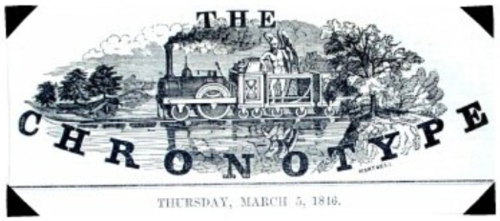Blockage

We know about the good times. In upturns, commodities and capital flow freely. Prices increase, people buy second houses, spend beyond their means, take risks. They cultivate wasteful habits, dream about the future. They often do not save.
Times of blockage are periods when everything stops. We call them Depressions, and America has had a lot of them: 1819-21, 1837-8, 1857, 1873-79, 1893-96, and 1929-33. What happens in blockage? People doubt the value of stocks, land values plummet, they hoard gold. Commerce slows to a crawl. They are frightening times of unemployment, shattered state services, weakened institutions and riot. Donations dry up. But times of blockage are also times to rethink, to take some time to ponder, to innovate. It was during the crisis of 1857 that the previously ignored insights of a long-haired mathematician, abolitionist, and utopian socialist named Elizur Wright were finally recognized as critically valuable for economic stability.
In the 1840s and 1850s, Wright had tried to convince the state of Massachusetts that life insurance needed reform. As a mathematician, he had been asked calculate the present value of any given policy based on the premiums paid in, a calculation that British mathematicians had called impossible. He created a rule-of-thumb called “net present value” (NPV) to determine the value of a flow of resources in a single instant (present value) and then to subtract operating costs (net).
But the more Elizur calculated, the more troubled he became. Many companies by his calculations spent so much on advertising that they could never pay off their policies. Others profited by canceling policies for those who missed a single payment. The effect was often to end a policy a year before death, leaving families with nothing. Wright fumed, but in vain. In the go-go 1840s and early 1850s, no one would listen to his criticisms and only a few would accept his principle of valuation. But through the 1850s he returned to the Massachusetts legislature with a blueprint for reform. When the Panic of 1857 hit with the failure of a bank called Ohio Life Insurance and Trust Company, Elizur was prepared. This blockage of trade and transport, Wright declared, was a result of distrust. Insurance companies needed reliable accounting practices that would allow Massachusetts to calculate net present value, and internal rate of return. When trust returns, Wright assured them, the blockage will be over.
Unconvinced but without options, Massachusetts adopted Wright’s blueprint, preventing any company from selling insurance in Massachusetts that did not provide complete financial information. NPV offers transparency of obligations. The panic was short-lived, and Elizur Wright’s accounting principles became the basis of what we now call Generally Accepted Accounting Principles, adopted by millions of companies, states, and non-governmental organizations throughout the world. MBAs take credit for it, but a long-haired radical gave us cost accrual accounting.
Wright took advantage of blockage to identify its root cause – a distrust of opacity. Increased financial transparency was the solution; trust collapses without it. Blockage can let us make institutions open up and make them thrivable.
